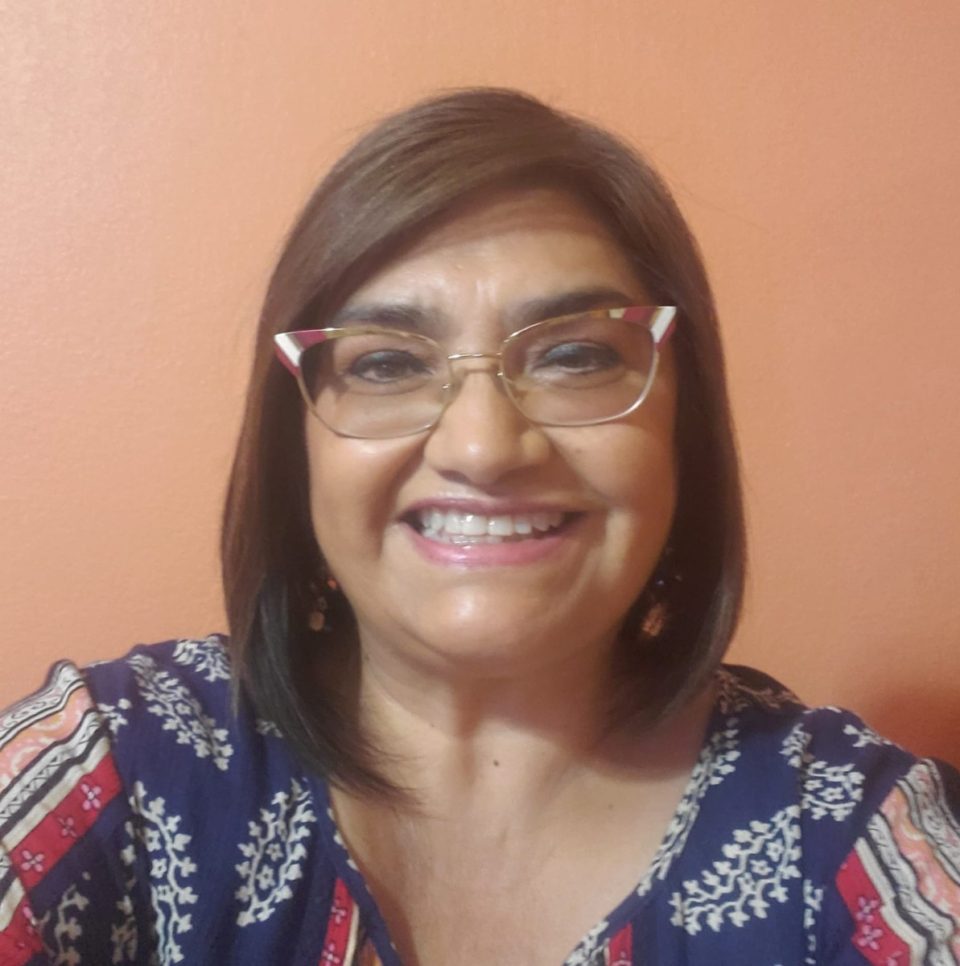Insurgent Lopez Wins at NAHJ in Landslide:
Voters Oust 4 Incumbents
Essence Begins Furloughs, Citing COVID
More Named to Diversity Posts
‘Why Do You Always Write About Race?’
Trump Backer Attacks Photojournalist
Sports Anchor Out; Called Tim Scott a ‘Tom’
. . . Something About Black Journalists?
3 Groups Seek ‘Anti-Racist’ Newsrooms
Short Takes
Support Journal-isms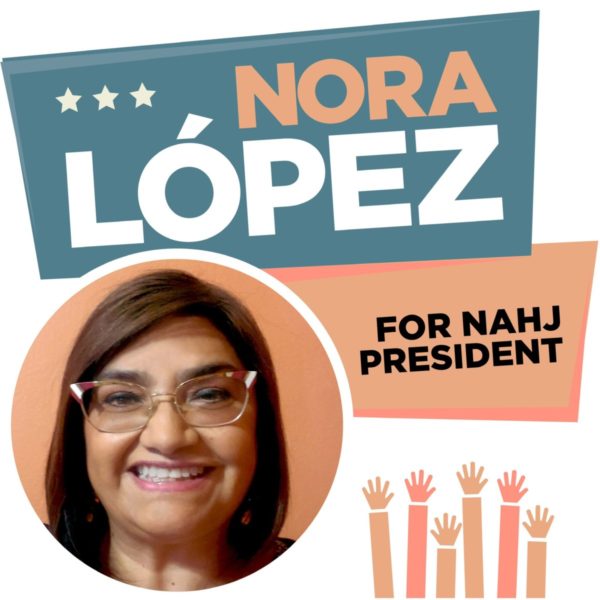
Voters Oust 4 Incumbents
Nora Lopez, metro editor of the San Antonio Express-News, decisively won election as the next president of the National Association of Hispanic Journalists Friday as members overwhelmingly voted for change and transparency.
Lopez defeated Nancy San Martin, the board’s vice president-print and, until last week, managing editor of the Miami Herald’s El Nuevo Herald, in a landslide. The vote was 302 to 125, with 2 write-ins.
Three other incumbents were ousted as they sought re-election or ran for other positions: Fin Gomez, national secretary who ran for vice president-broadcast, Steve Soliz, at-large officer who sought re-election; and Rafael Mejía, the Spanish-language representative who ran for another term.
Hovering over the results was the board’s disastrous decision in the spring, taken in executive session, to postpone elections because of the “unpredictability” caused by the COVID-19 pandemic. The board eventually relented and agreed to an all-electronic election, but the experience mobilized activist members such as Lopez to run for office and to place measures on the ballot to ensure more transparency.
While the ballot measures won overwhelming support, the turnout did not meet the required quorum of one-third of the membership. “The bylaws committee will begin looking at next steps,” the organization said.
Still, the sentiment was obvious. The question “Do you agree that the Board cannot cancel an election but if they must postpone, must hold an election no later than the second Friday of October?” was endorsed by 95 percent of those who voted.
“Following several years of uncontested races and low voter turnout, this year, 550 voters participated in the 2020 NAHJ Election,” the 2020 Elections Committee said. It announced the results with the Advisory Committee to the 2020 Election. “The election rendered the highest turnout in recent NAHJ history.”
Lopez said in her campaign, “It is key that members know what we are doing as a board and organization. I will make it a priority to ensure all NAHJ business is open for members and the public to see. Additionally, we should conduct open meetings via video conferencing. All members are welcome.”
Lopez also declared, “As an immigrant and Latino journalist, I believe that newsrooms should reflect the communities they cover. Now, more than ever, the need for real news and authentic voices in America’s newsrooms is critical.”
In other races, Arelis R. Hernández, national reporter at The Washington Post, was unopposed for vice president/print and incumbent Yvette Cabrera, who covers environmental justice issues for Grist, had no opposition for vice president for digital.
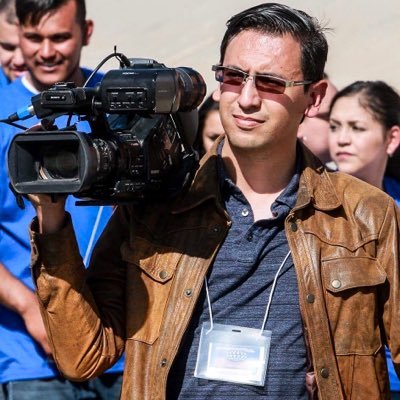 Julio-César Chávez (pictured), a Washington-based producer for Reuters, defeated Gomez for vice president-broadcast, 259 to 157. Chávez successfully challenged as inappropriate outgoing President Hugo Balta’s decision to endorse San Martin at Thursday’s NAHJ board meeting and turn the meeting over to her. Gomez, a White House producer for CBS News, is the first Latino journalist to serve on the board of the White House Correspondents Association in its 105-year history.
Julio-César Chávez (pictured), a Washington-based producer for Reuters, defeated Gomez for vice president-broadcast, 259 to 157. Chávez successfully challenged as inappropriate outgoing President Hugo Balta’s decision to endorse San Martin at Thursday’s NAHJ board meeting and turn the meeting over to her. Gomez, a White House producer for CBS News, is the first Latino journalist to serve on the board of the White House Correspondents Association in its 105-year history.
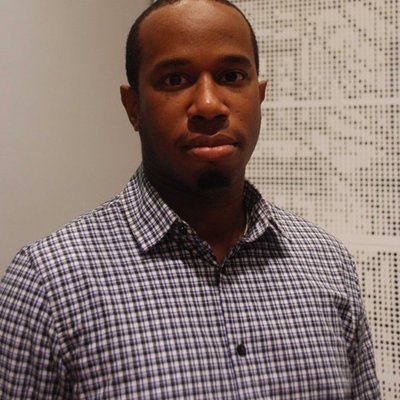 Keldy Ortiz (pictured), a Dominican-American reporter for Newsday, defeated Diana Fuentes, deputy metro editor at San Antonio Express-News, for chief financial officer, 222 to 186.
Keldy Ortiz (pictured), a Dominican-American reporter for Newsday, defeated Diana Fuentes, deputy metro editor at San Antonio Express-News, for chief financial officer, 222 to 186.
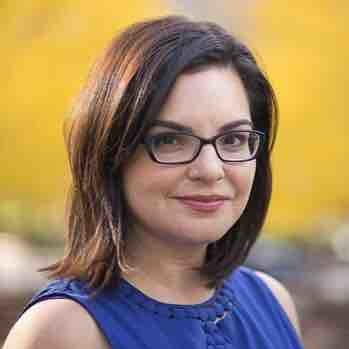 Blanca Rios (pictured), newswriter/digital producer at WLS-TV in Chicago and NAHJ’s current Region 6 director, beat Rafael Olmeda, reporter for the South Florida SunSentinel and a former NAHJ president, 238 to 183.
Blanca Rios (pictured), newswriter/digital producer at WLS-TV in Chicago and NAHJ’s current Region 6 director, beat Rafael Olmeda, reporter for the South Florida SunSentinel and a former NAHJ president, 238 to 183.
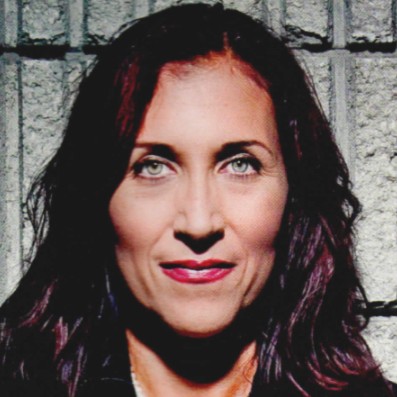 For general at-large officer, McNelly Torres (pictured), independent investigative journalist, prevailed over Soliz, anchor at KOB-TV in Albuquerque, N.M., 327 to 90.
For general at-large officer, McNelly Torres (pictured), independent investigative journalist, prevailed over Soliz, anchor at KOB-TV in Albuquerque, N.M., 327 to 90.
 In the contest for Spanish-language at-large, Jennifer A. Marcial Ocasio (pictured), senior content editor at the Orlando Sentinel’s El Sentinel, received 202 votes to 116 for Mejia and 82 for Sal Morales, a Miami-based freelancer specializing in general assignment stories, and special events for Canal 33 of El Salvador.
In the contest for Spanish-language at-large, Jennifer A. Marcial Ocasio (pictured), senior content editor at the Orlando Sentinel’s El Sentinel, received 202 votes to 116 for Mejia and 82 for Sal Morales, a Miami-based freelancer specializing in general assignment stories, and special events for Canal 33 of El Salvador.
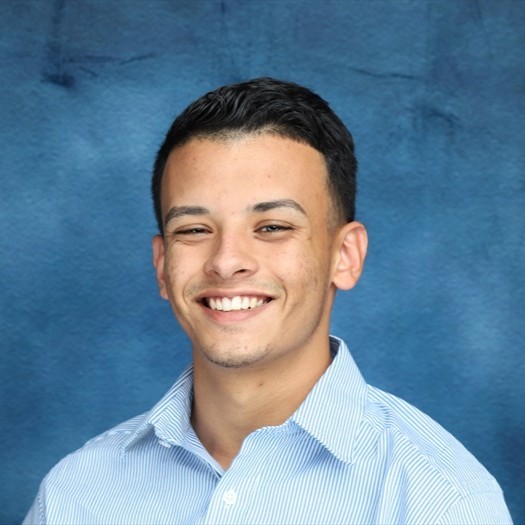 For student representative, Luis Joel Méndez González (pictured) of the University of Puerto Rico in Arecibo won, 67 votes to 35 for Kate Sequeira of the University of Southern California and 14 for Kimberly Cruz of California State University, Fullerton.
For student representative, Luis Joel Méndez González (pictured) of the University of Puerto Rico in Arecibo won, 67 votes to 35 for Kate Sequeira of the University of Southern California and 14 for Kimberly Cruz of California State University, Fullerton.
Olmeda, who supported Lopez, posted on his website, “Nora has long been active with the San Antonio Association of Hispanic Journalists (serving as its president from 2019-2020) and the San Antonio Pro Chapter of the Society of Professional Journalists (serving as its vice president for programming and as a producer of the group’s annual scholarship fundraiser, the Gridiron show). She is also a past president of the Dallas-Fort Worth Network of Hispanic Communicators.
“She has helped raise more than $200,000 in scholarships to support journalism students through her work with those groups, and sought to help local area college students build their portfolios by giving them their first shot at work with weekend general assignments.”
Essence Begins Furloughs, Citing COVID
“After a thorough analysis of our business and its financial position and carefully exploring all options for continued viability, we have made the very difficult decision to implement temporary measures to account for the ongoing significant negative impact of the pandemic, including furloughs,” Essence Communications announced on Tuesday.
“While the business was able to prevent taking such measures during the initial onset of the pandemic via significant personal investments from ownership along with limited PPP funds, the prolonged situation and unforeseeable business now require us to take additional action to ensure the long-term sustainability of ECI [Essence Communications, Inc.]”
Maxwell Tani added for The Daily Beast, “The publication said that while it would only pay staff salaries through the week, it did not anticipate the furloughs lasting longer than six months. Essence is the latest in a series of media publications that have implemented furloughs during the pandemic, including Vox Media, magazine publisher Condé Nast, and BuzzFeed News, which restored full salaries for employees in recent weeks.”
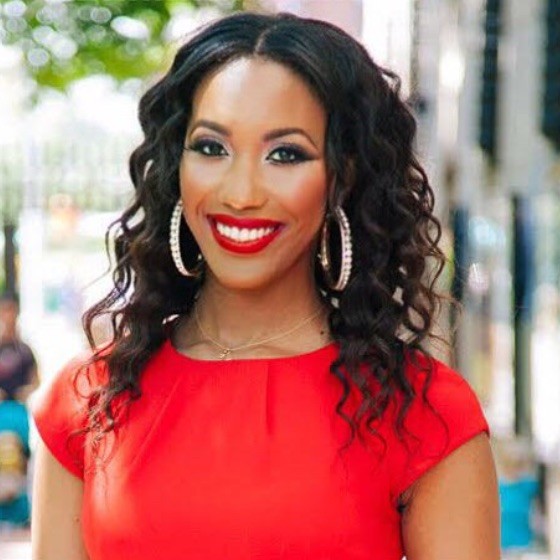 Spokesperson Sheila Harris would not specify who was being furloughed, “We don’t comment on individual personnel matters,” she messaged Journal-isms.
Spokesperson Sheila Harris would not specify who was being furloughed, “We don’t comment on individual personnel matters,” she messaged Journal-isms.
However, Joi-Marie McKenzie (pictured), senior entertainment editor, announced on Facebook on Sept. 18, “After two years of serving Black women at Essence, it’s bittersweet to share that today is my last day. Thank you so much ladies (and a few good men) for allowing me to not only spread my wings but soar. I can’t wait to continue to root for the amazing creatives there from afar!” McKenzie is now deputy editor of entertainment at Insider.
More Named to Diversity Posts
The magazine publisher Condé Nast has named Yashica Olden as its first global chief diversity and inclusion officer; at the Baltimore Sun, Sundra Hominik “will be the Content Editor for a new beat: Diversity, Equity and Inclusion,” and at the Star Tribune in Minneapolis, the Star Tribune on Tuesday named Kyndell Harkness its first assistant managing editor for diversity and community.
The creation of such positions has increased since the racial reckoning brought on by the Memorial Day killing of George Floyd by Minneapolis police.
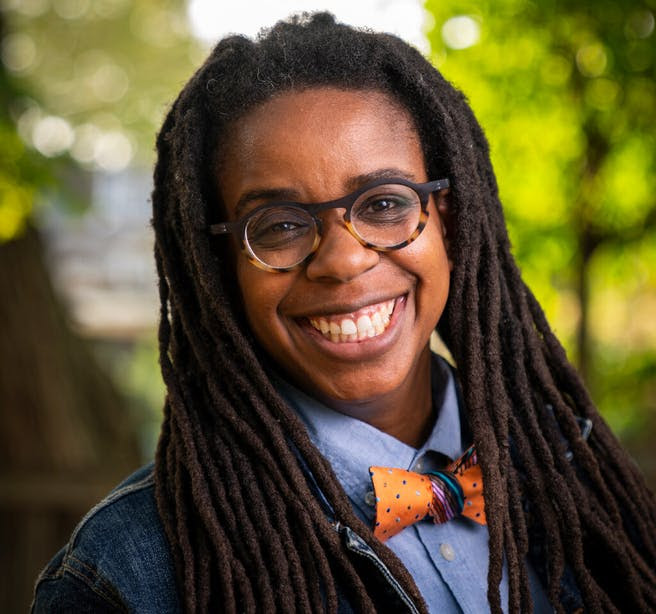 Mary Lynn Smith reported Thursday for the Star Tribune, “Kyndell Harkness (pictured), a photo editor and 20-year veteran at the newspaper, is expected to move into the leadership role in the next few weeks. Her appointment comes on the heels of an internal discussion about racism, diversity and inequity in the newsroom and the effect it has on the newspaper’s community coverage.
Mary Lynn Smith reported Thursday for the Star Tribune, “Kyndell Harkness (pictured), a photo editor and 20-year veteran at the newspaper, is expected to move into the leadership role in the next few weeks. Her appointment comes on the heels of an internal discussion about racism, diversity and inequity in the newsroom and the effect it has on the newspaper’s community coverage.
“That discussion reached new heights after George Floyd was killed by Minneapolis police in May, setting off protests across the country.
“As in other newsrooms nationwide, journalists of color at the Star Tribune discussed needed changes and presented a list of demands to management, which included the hiring of an editor who could create a more equitable newsroom culture and hold the paper internally accountable for its news coverage.
“A major push by the group is to hire more people of color and publish an annual diversity report that gives readers a better understanding of who is telling their community stories. . . .”
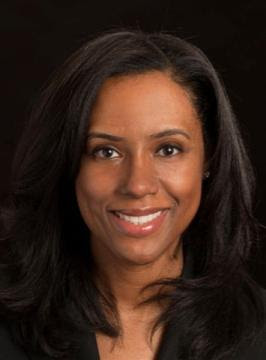 At Condé Nast, “Olden (pictured) will be responsible for developing and implementing diversity and inclusion strategies across the company’s entire portfolio,” Freya Drohan wrote Wednesday for Fashion Week Daily’s The Daily Front Row.
At Condé Nast, “Olden (pictured) will be responsible for developing and implementing diversity and inclusion strategies across the company’s entire portfolio,” Freya Drohan wrote Wednesday for Fashion Week Daily’s The Daily Front Row.
“Tennessee-native Olden was previously the executive director of inclusion and diversity on [the marketing and advertising company WPP’s] global culture team. She also served as the interim global inclusion lead for British insurance company Aviva and as the first head of diversity and inclusion for the United Nations World Food Program in Italy. Her impressive resume also boasts experience working on diversity and inclusion teams for Barclays Capital, Credit Suisse, and Sandoz. . . .”
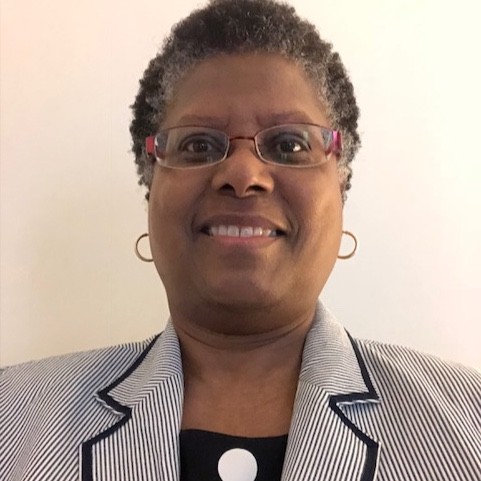 Sun Managing Editor Sam Davis wrote Thursday to staffers, “Sundra (pictured), who joined us in January as the Content Editor for magazines, will be the Content Editor for a new beat: Diversity, Equity and Inclusion.
Sun Managing Editor Sam Davis wrote Thursday to staffers, “Sundra (pictured), who joined us in January as the Content Editor for magazines, will be the Content Editor for a new beat: Diversity, Equity and Inclusion.
“Yvonne Wenger and her beat covering poverty and social issues will be part of Sundra’s team. Sundra will continue to have a role working with Diana Sugg as she manages our two Report for America journalists covering issues concerning African American and Hispanic communities.
“We will be adding another Reporter to the DEI team.
“Sundra will also have a role in helping the newsroom in our diversity, equity and inclusion efforts in recruiting, training, retention and mentoring. We will also continue to rely on all of our editors and content creators to contribute to our efforts to include diversity, equity and inclusion in our content and staffing.”
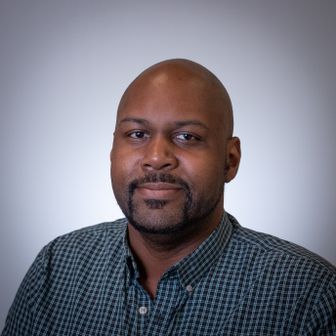 Davis added, “We are pleased to announce that John-John Williams (pictured) has been selected as the second reporter on the Diversity, Equity and Inclusion beat.
Davis added, “We are pleased to announce that John-John Williams (pictured) has been selected as the second reporter on the Diversity, Equity and Inclusion beat.
“John-John has worked for The Baltimore Sun since 2005 after joining the paper as an education reporter. He joined the features staff as the fashion reporter in 2011. His role in features expanded to covering home, food, travel and popular culture. As a champion of diversity and inclusion, he has led the paper’s Diversity Committee for the past two years.”
- The Objective: The fight over racism, sexism, and other misconduct in public radio isn’t going away (Sept. 25)
- Shree Paradkar, Toronto Star: Black voices are still largely absent from mainstream media. It’s time for the industry to take a hard look at itself
‘Why Do You Always Write About Race?’
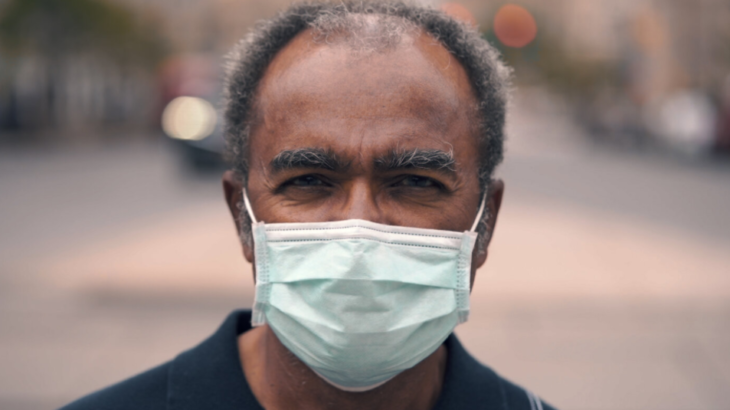 “Why are you always writing about race?” Vilona Trachtenberg asked Rod Watson (pictured), columnist and urban affairs editor with The Buffalo News and past president of Buffalo Association of Black Journalists, on Sept 3.
“Why are you always writing about race?” Vilona Trachtenberg asked Rod Watson (pictured), columnist and urban affairs editor with The Buffalo News and past president of Buffalo Association of Black Journalists, on Sept 3.
” ‘Well, of course, I don’t always write about race,’ Watson said. ‘But to the degree that I do, it’s because race-based inequity continues to exist here in Western New York and across the nation. Not to deal with that would be a betrayal of all those people who stood in front of fire hoses and had police dogs [sicced] on them and took batons up beside the head, and even gave their lives so that people like me could be in positions like this, and have this platform.
“Because diversity is not just checking a box on an EEO form; it’s incorporating and valuing the perspectives and insights that come with being black in America so that the media can present a more accurate and comprehensive portrayal of society, and that society is still filled with racial inequity no matter what metric you look at – whether it’s the wealth gap, the income gap, the poverty gap, the education gap, or the health care gap – which we’ve seen play out recently in the disparate impact of COVID-19 on people of color.’ . . .”
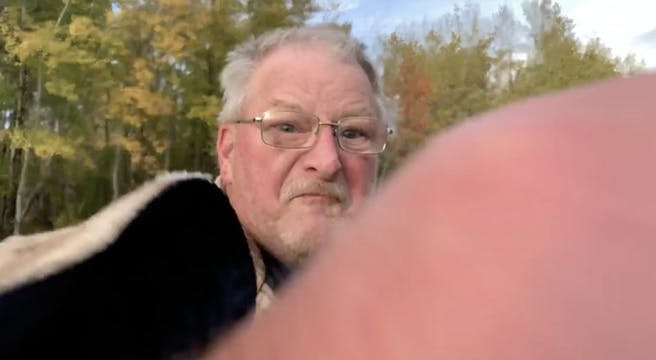
Trump Backer Attacks Photojournalist
“A supporter of Donald Trump attacked a photojournalist covering protests near the president’s rally Wednesday, punching a phone out of the videographer’s hand while it was recording,” Katie Galioto reported Thursday for the Star Tribune in Minneapolis.
“WCCO-TV aired footage from photojournalist Dymanh Chhoun, who was taking video of a man confronting presidential candidate Joe Biden supporters gathered near Duluth’s airport before Trump’s campaign visit, the station reported.
” ‘You guys want to be peaceful? Be peaceful. You want to be violent? Come to me,’ the man said, turning to punch Chhoun’s phone.
“Duluth police, who are investigating the incident, said Chhoun was unhurt and his phone was not damaged. . . .”
Galioto also wrote, “Chhoun was born in a Thai refugee camp after his family fled Cambodia. In elementary school he moved to Minnesota, where he became a U.S. citizen and attended college. His assignment manager, Guy Still, on Twitter condemned the attack and called Chhoun ‘a true American patriot.’ “
- Asian American Journalists Association: AAJA Statement on the Attack of WCCO-TV Photojournalist Dymanh Chhoun
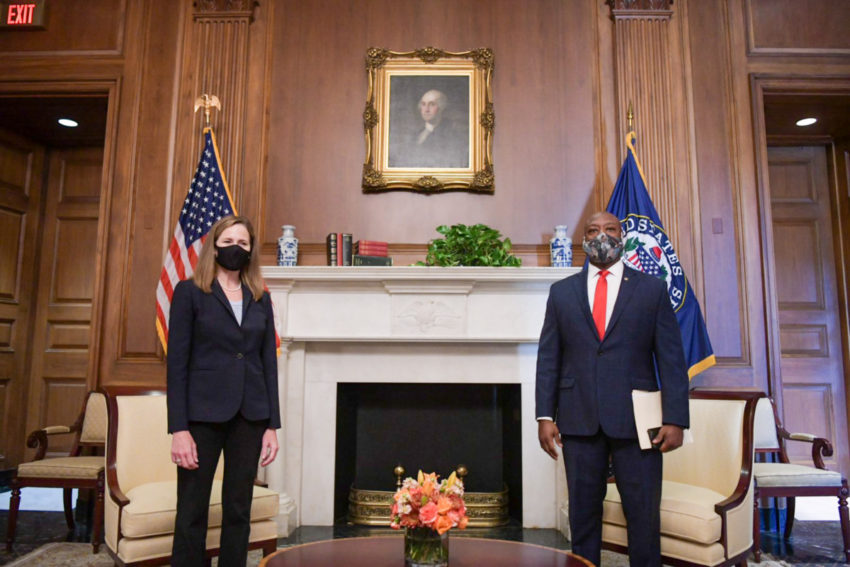
Sports Anchor Out; Called Tim Scott a ‘Tom’
“A two-time Emmy-nominated sports anchor in Connecticut is out of a job after he called Republican Sen. Tim Scott ‘Uncle Tom’ on social media Wednesday,” Jessica Chasmar reported Thursday for The Washington Times.
“Fred Gerteiny, a sports anchor at News 12 Connecticut, tweeted, ‘Thanks Uncle Tom,’ in response to Mr. Scott saying President Trump likely ‘misspoke’ when he told the right-wing group Proud Boys to ‘stand back and stand by‘ during Tuesday night’s first presidential debate.
“News 12 said in a statement Wednesday night that it fired Mr. Gerteiny due to its ‘zero tolerance policy for racism.’ ” Gerteiny is white.
- Channel 4 News, Britain: Revealed: Trump campaign strategy to deter millions of Black Americans from voting in 2016
- Bob Garfield with Dr. Joan Donovan, “On the Media,” WNYC-FM, New York: Covering the Proud Boys, Without Platforming Them
. . . Something About Black Journalists?
. . . . Meanwhile, Journal-isms asked Black journalists to comment on a Facebook posting from Gregg W. Morris of Hunter College in New York. “Roland Martin (pictured, below) should moderate all of the remaining presidential debates. He, and he alone, has the fangs, savvy and intellect to put that white supremacist in his place,” Morris wrote.
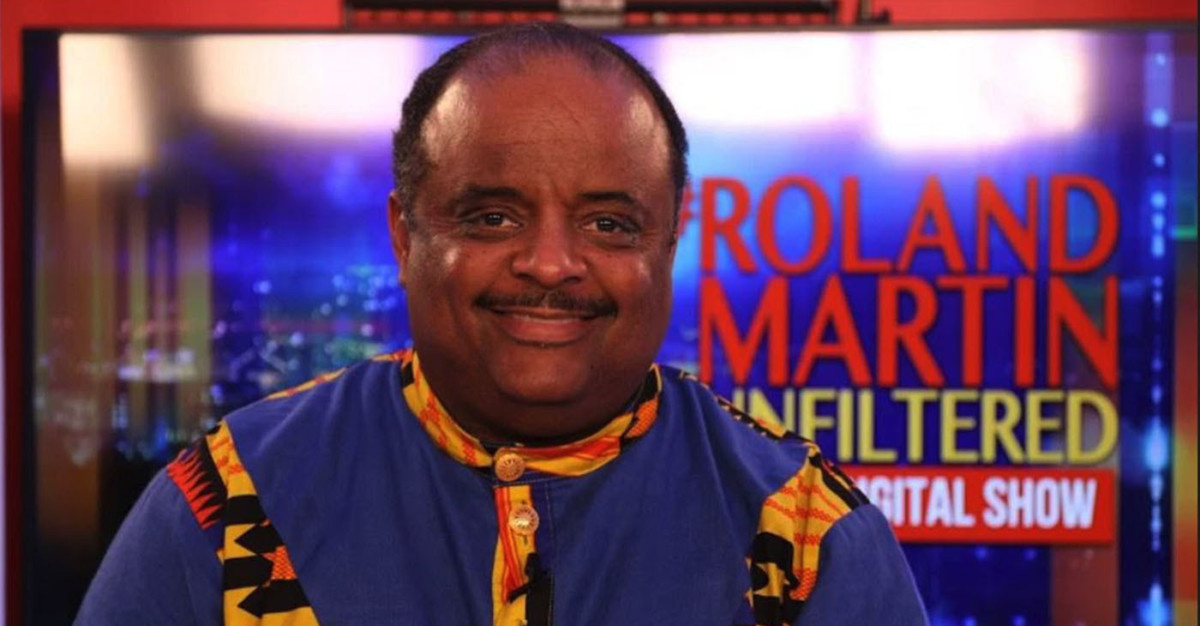 As previously reported, commentator Michele Norris said Tuesday on Twitter, “Today is Gwen Ifill’s [birthday] and I can’t help but wonder how her ‘mama don’t take no mess’ strategy of moderating would have kept this train from veering off the track. Missing her and I know….I know …. I am not alone.”
As previously reported, commentator Michele Norris said Tuesday on Twitter, “Today is Gwen Ifill’s [birthday] and I can’t help but wonder how her ‘mama don’t take no mess’ strategy of moderating would have kept this train from veering off the track. Missing her and I know….I know …. I am not alone.”
Is there something about Black journalists — or is it just these Black journalists?
Veteran Roger Witherspoon replied, “There’s a long history of Black Journalists standing up to racist officials.” Naming two Black journalists, including this one, he added that he couldn’t imagine them “tolerating the conduct [debate moderator Chris] Wallace allowed.”
Martin replied, “Ha! Too Black.”
Black journalists who have moderated presidential or vice presidential debates or appeared on a debate panel include Robert Maynard of The Washington Post in 1976, between Gerald R. Ford and Jimmy Carter (video); William Hilliard of the Oregonian in 1976 between Carter and Ronald Reagan; Lee May of the Los Angeles Times in 1980 between Reagan and John Anderson; and Bernard Shaw of CNN between Michael Dukakis and George H.W. Bush in 1988 (video).
Roger Simon wrote later in Politico, “Shaw really liked to see the candidates sweat. He liked to see the panic in their eyes.“
Also, Carole Simpson of ABC News in 1992, between George H. W. Bush, Bill Clinton and Ross Perot; Gwen Ifill of PBS, vice presidential debates in 2004 (Dick Cheney–John Edwards) and in 2008 (Sarah Palin–Joe Biden) (video); and Lester Holt of NBC News in 2016, between Hillary Clinton and Donald Trump (video).

3 Groups Seek ‘Anti-Racist’ Newsrooms
Three organizations Thursday announced “a catalyst in a social change movement that seeks to build journalistic institutions where newsrooms are actively anti-racist and collaborative, and journalists of color feel like they truly belong.”
The announcement, made as the Online News Association met for a 10-day virtual convention that as of midday Friday had registered 1,650 people, with attendees continuing to join, according to ONA spokesperson Leah Rush.
The joint statement said, “Our organizations came together because we found that we were each fighting the same fight, but on different fronts, to create social change. Each of us — Online News Association, Maynard Institute, and OpenNews — had been tackling this change separately, but once we started imagining what could be possible if we combined the leadership power and reach of ONA with Maynard’s training on dismantling systemic racism and OpenNews’s expertise in community organizing and support, we knew that we had to join forces.
“Vision25 is a commitment by our three organizations to advance racial equity in journalism.”
ONA opened its conference with a session featuring Black Journalists, “More Equitable Coverage for Black America.“
Participating were Todd Johnson, chief content officer, theGrio.com; Glenn Burkins, publisher, QCity Metro; Tiffany Walden, co-founder and editor-in-chief, The TRiiBE; Wendi C. Thomas, editor and publisher, MLK50: Justice Through Journalism; and freelance writer Patrice Peck. Imaeyen Ibanga, a presenter with AJ+, was moderator.
- Sisi Wei, Open News: Moving Far Beyond “Diversity” And Pushing Directly For Social Change
Short Takes
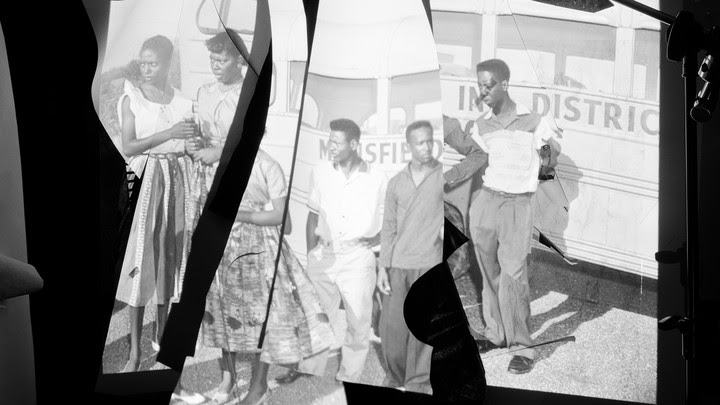
- Black children who desegregated schools “are in their 50s, 60s, 70s, and 80s now. Many of them are no longer with us. But those who are have stories to tell,” Rebecca J. Rosen wrote for the Atlantic Tuesday, under the headline, “The Children Who Desegregated America’s Schools.” Rosen tells the stories of Hugh Price, Jo Ann Allen Boyce, Sonnie Hereford IV, Millicent Brown and Frederick K. Brewington.
- “The U.S. Supreme Court Friday said it has agreed to hear a longstanding case dealing with the FCC’s attempt to relax restrictions on local media ownership,” Jill Goldsmith reported Friday for Deadline. “In four decisions starting in 2004, the same panel of the 3d Circuit required the FCC to take race and gender ownership diversity into account when crafting local ownership structural rules,” David Honig, founder of the Multicultural Media, Telecom and Internet Council, messaged Journal-isms on Friday. “The big issue is whether the FCC was unreasonable in not adequately considering race and gender diversity when it relaxed some of the structural rules in 2018.”
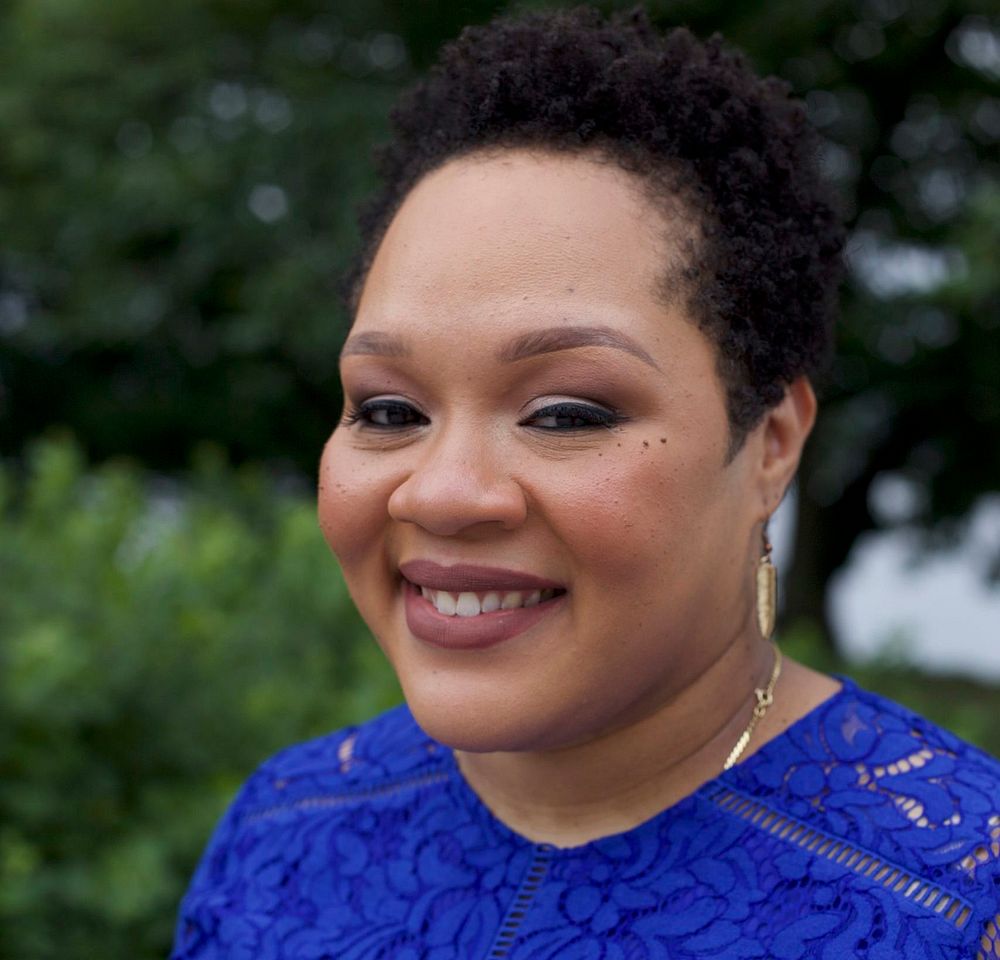 “PBS NewsHour” White House correspondent Yamiche Alcindor (pictured) is the 2020 Gwen Ifill Award recipient, the International Women’s Media Foundation announced on Monday. Alcindor said, “Gwen Ifill was a journalism icon who exemplified all the virtues of the craft that we need now – fairness, bravery and truth-telling at all costs. Gwen helped me navigate my career and embrace my passion for civil rights journalism on many beats and in all forms. I am forever grateful for [her] support as I accept this award.”
“PBS NewsHour” White House correspondent Yamiche Alcindor (pictured) is the 2020 Gwen Ifill Award recipient, the International Women’s Media Foundation announced on Monday. Alcindor said, “Gwen Ifill was a journalism icon who exemplified all the virtues of the craft that we need now – fairness, bravery and truth-telling at all costs. Gwen helped me navigate my career and embrace my passion for civil rights journalism on many beats and in all forms. I am forever grateful for [her] support as I accept this award.”
- “Ten of the nation’s leading Black publishers have come together to reimagine the Black press in America,” Local Media Association CEO Nancy Lane writes. “Their first official initiative is the launch of Word in Black, a news collaborative, unlike anything we have seen in the industry. . . . Word in Black frames the narrative and fosters solutions for racial inequities in America.” Its website also says, “A central team, led by Nick Charles, will turn their local stories into powerful national stories. . . . The first project focuses on the impact of COVID-19 on K-12 education in Black communities across the United States. Two funders have made this work possible.” Charles, a veteran journalist who is the project manager, national writer and editor, said Elinor Tatum of the New York Amsterdam News is lead publisher.
- A Washington Post project, “The covid-19 recession is the most unequal in modern U.S. history,” was deemed to have the “most impressive graphics of the day” Wednesday by the Poynter Institute’s Tom Jones. The Post’s subhead is, “Job losses from the pandemic overwhelmingly affected low-wage, minority workers most. Seven months into the recovery, Black women, Black men and mothers of school-age children are taking the longest time to regain their employment.” The project is credited to Heather Long, Andrew Van Dam, Alyssa Fowers and Leslie Shapiro.
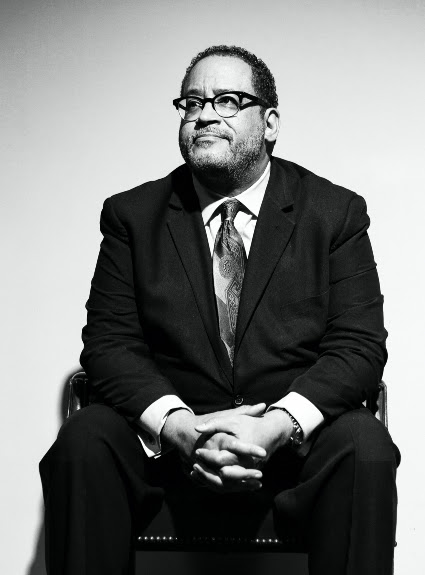 “Michael Eric Dyson (pictured), a globally renowned scholar of race, religion and contemporary culture, will join Vanderbilt as Centennial Chair and University Distinguished Professor of African American and Diaspora Studies in the College of Arts and Science and University Distinguished Professor of Ethics and Society in the Divinity School on Jan. 1, 2021,” Vanderbilt University announced Monday. Dyson, a frequent commentator in print, online and on cable, is now at Georgetown University.
“Michael Eric Dyson (pictured), a globally renowned scholar of race, religion and contemporary culture, will join Vanderbilt as Centennial Chair and University Distinguished Professor of African American and Diaspora Studies in the College of Arts and Science and University Distinguished Professor of Ethics and Society in the Divinity School on Jan. 1, 2021,” Vanderbilt University announced Monday. Dyson, a frequent commentator in print, online and on cable, is now at Georgetown University.
- “The giant, light-up sign visible from The Columbus Dispatch’s newsroom proclaims it to be ‘Ohio’s Greatest Home Newspaper,’ ” begins a piece Monday by Marion Renault in Columbia Journalism Review. “A more honest description might be ‘Ohio’s Whitest Home Newspaper.’ In its almost 150 years of existence, the paper has consistently failed to reflect, and therefore serve, Columbus’s residents of color. . . .”
- ” ‘The Truth,’ a new radio station featuring local talk and news programming targeting Milwaukee’s Black community, will debut later this year,” Chris Foran reported Tuesday for the Milwaukee Journal Sentinel. “Good Karma Brands, the sports broadcasting and marketing company that owns WTMJ-AM (620) and WKTI-FM (94.5) in Milwaukee, announced it would launch the new station at 101.7 FM. Until earlier this month, that spot on the dial had been the FM home of WRRD-AM (1510); Good Karma bought the AM station and its FM translator earlier this month.”
- “Using inclusive language in a company’s policies or public persona (such as in tweets or on the organization’s website) is a great way to show — not just tell — organizational values,” Henry Behrens wrote Thursday for ACES: The Society for Editing. “Potential employees from groups that have historically been decentered will notice and appreciate these small signposts. When I started my gender transition, I searched listings of local salons and barbers for hours for any sign of inclusivity; finally, I found a rainbow on a website, and I’ve been going to that salon ever since. By ensuring inclusive and representational language (and images), organizations can attract this kind of loyalty.”
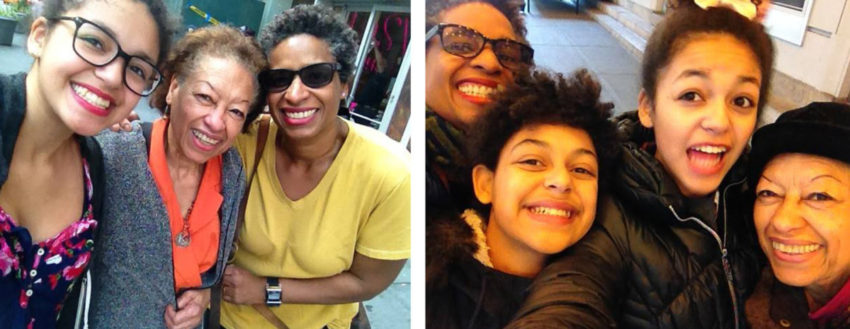
- Yvonne Latty, director of Reporting New York, Reporting the Nation graduate concentrations at New York University, delivered a moving piece, “Portrait Of A Parent With Alzheimer’s,” for NPR on Monday. “I love my mom, and I miss who she was,” Latty wrote. “She was a beautiful Dominican immigrant who loved to dance in the kitchen. She loved Tito Puente, Celia Cruz and the merengues of Johnny Pacheco. . . . I feel so alone in this disease, but I know I am not. There are millions of people just like me, holding on to and loving someone with this wicked form of dementia.”
- “CBC/Radio-Canada and the Canadian Journalism Foundation (CJF) today announced two new fellowships for Black journalists: The CJF-CBC/Radio-Canada Black Journalism Fellowship (open to all genders), and The CJF-CBC/Radio-Canada Black Women’s Journalism Fellowship,” the organizations said Monday. “The fellowships will provide unique opportunities for early-career Black journalists (with one to 10 years’ experience) to be hosted by a CBC News or Radio-Canada Info newsroom. . . .”
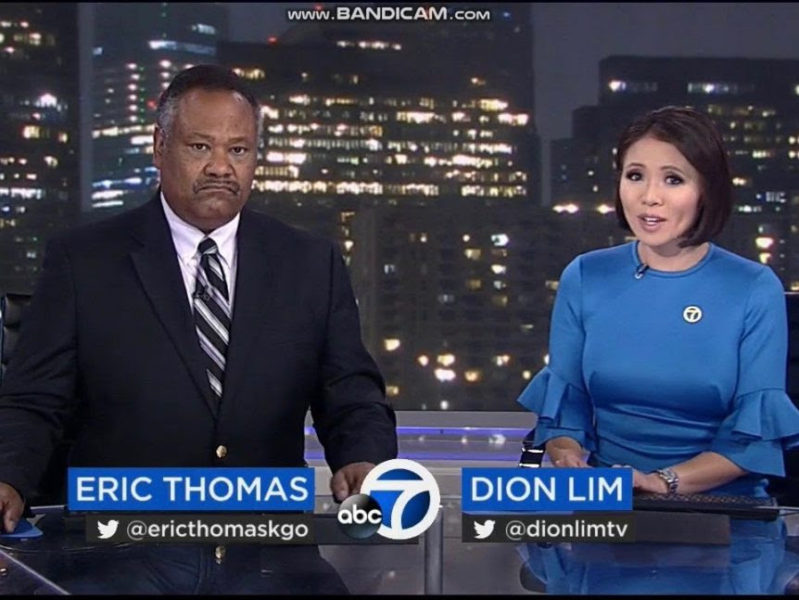
- In San Francisco, “KGO anchor-reporter Eric Thomas has said goodbye to his news team after 26 years,” Stephanie Tsoflias Siegel reported Monday for TVSpy. “The San Francisco and Bay Area journalist posted that Sunday was his last day on the morning anchor desk at the ABC station. ‘This is my last day on the anchor desk at ABC-7,’ Thomas wrote on Facebook. ‘I’ve got another day of reporting to finish, then I’ll say goodbye to this chapter of my career after 26 years. It’s a mutual decision and KGO-TV has been very good and very respectful. . . .”
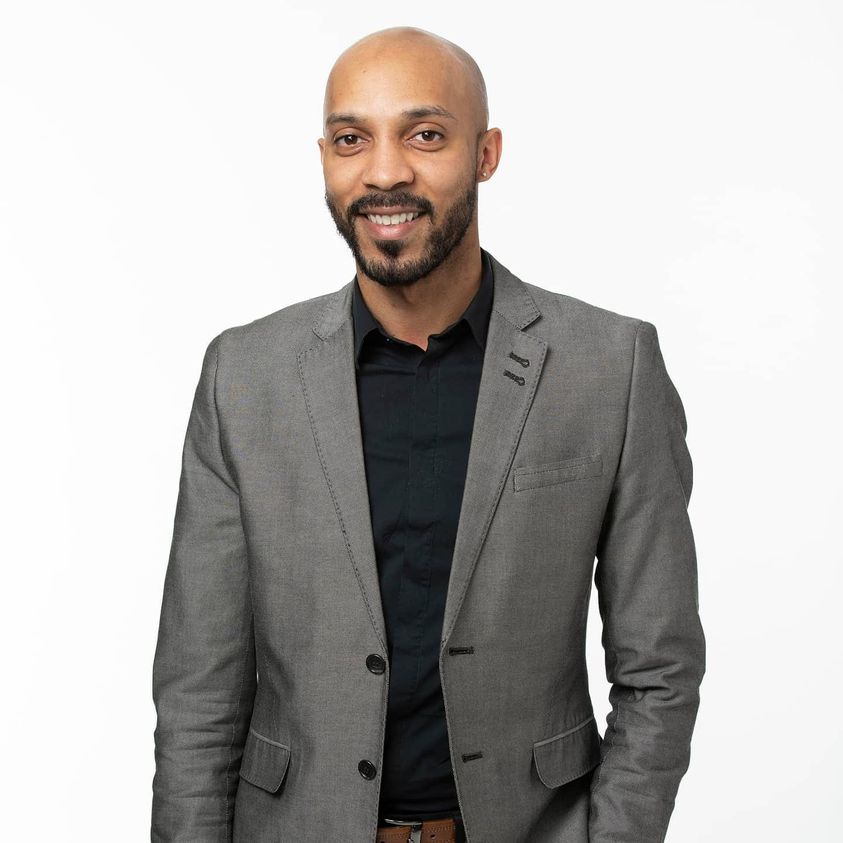 Cameron E. Jones (pictured) has been named manager, Office of the President at ABC News, James Goldston, president of ABC News, wrote staffers Wednesday. “From 2012-2018, he was an integral part of the GMA [‘Good Morning America’] team. He worked on a variety of special events, spanning presidential elections coverage, a record number of Dancing With The Stars cast reveals and GMA Summer Concerts. A former ABC News MVP, Cameron conducted one-on-one interviews on camera for our digital operations with Oprah Winfrey, LeAnn Rimes, Kelly Rowland and Raven-Symoné. Last year he helped produce the Disney Advertising Sales Upfront, the first time ABC Entertainment, ABC News, ESPN, Freeform, FX and National Geographic had ever come together to present one massive upfront event. He worked closely with teams across the company on financial reporting, operations support and strategic communications. . . .”
Cameron E. Jones (pictured) has been named manager, Office of the President at ABC News, James Goldston, president of ABC News, wrote staffers Wednesday. “From 2012-2018, he was an integral part of the GMA [‘Good Morning America’] team. He worked on a variety of special events, spanning presidential elections coverage, a record number of Dancing With The Stars cast reveals and GMA Summer Concerts. A former ABC News MVP, Cameron conducted one-on-one interviews on camera for our digital operations with Oprah Winfrey, LeAnn Rimes, Kelly Rowland and Raven-Symoné. Last year he helped produce the Disney Advertising Sales Upfront, the first time ABC Entertainment, ABC News, ESPN, Freeform, FX and National Geographic had ever come together to present one massive upfront event. He worked closely with teams across the company on financial reporting, operations support and strategic communications. . . .”
- “Prior to the pandemic, Liliana López Ruelas, Hispanic community engagement editor of La Estrella de Tucsón, the sister paper to the Arizona Daily Star, had been working on new ways to engage La Estrella’s Spanish-speaking readers,” Stephanie Castellano and Kevin Loker wrote Sept. 16 for the American Press Institute. “With the onset of coronavirus, she was forced to abandon some pieces of that effort — but doubled down on others as the most efficient means of communicating with Spanish-speaking readers and delivering the news they needed.”
- “Fall sports tentatively resumed across America’s college campuses under the shadow of a deadly pandemic that has already cost one college football player his life,” Frank LoMonte wrote Sept. 23 for the Poynter Institute. “Abusive behavior by coaches is belatedly coming to light as former athletes share their stories. And the young Black men who disproportionately make up the rosters of revenue-generating sports are also those at greatest personal risk of overzealous police violence. Yet for athletes at many of the nation’s top athletic programs, talking to the news media is regarded as a punishable offense. Players caught giving interviews without their athletic department’s approval — about any topic, even one unrelated to sports — can be punished with sanctions including withdrawal of their scholarships, ending their college careers. . . .”
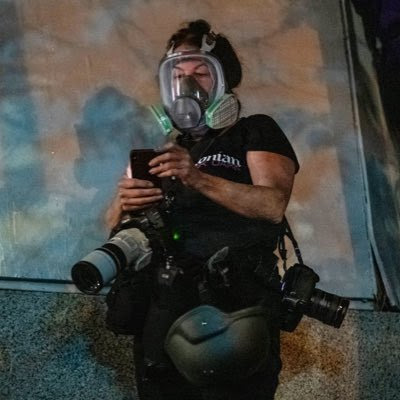
- Beth Nakamura, Oregonian photojournalist in Portland, “hasn’t had time to stop and think about the challenges of covering a pandemic, protests and wildfires,” Kristin Hare wrote Thursday in a profile for the Poynter Institute. “It’s been enough to work, rest and rise to do it all again. But Nakamura knows it will all become part of history. ‘I feel like we are in stories that are the things our grandchildren and great-grandchildren will be asking us about.’ There’s also never been a greater need for local journalism, she said, and it’s never been more under threat. But it matters. . . .”
- “Every agency that has bid for new business has heard this more than once: ‘We’ve gone in another direction.’ ” Shannon Gabor wrote Wednesday for Adweek. “It elicits an eye roll or smirk because if we put a bet on what the message was going to contain after a no response, we would all be rich in client losses. This phrase should no longer be used. Let’s retire it once and for all.”
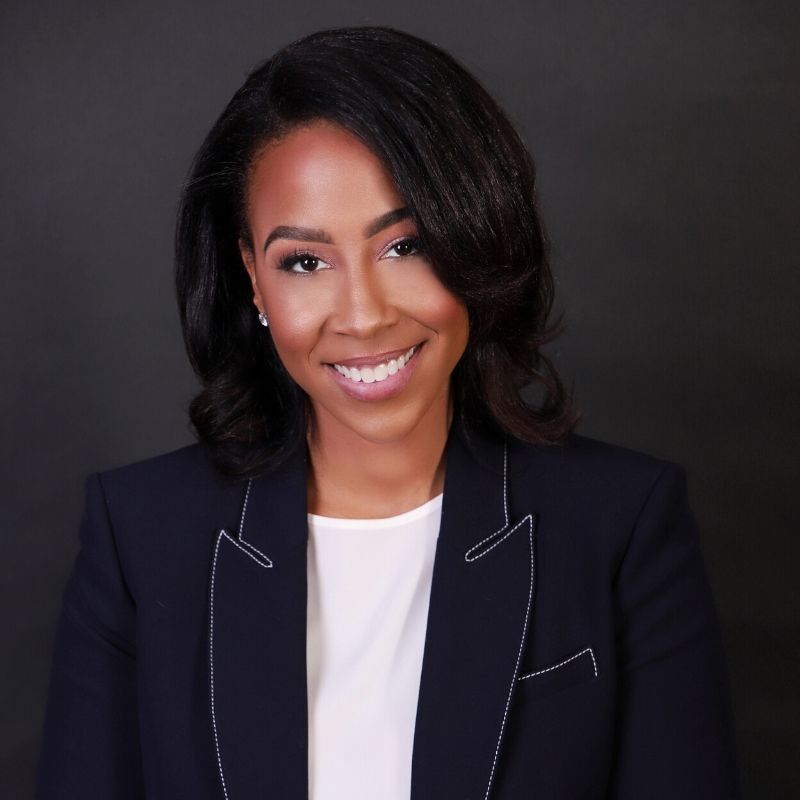 “Nikki Bethel (pictured), who took the Emma Bowen Foundation’s reins on an interim basis in March — during one of the most challenging moments in our nation’s history — is now the organization’s new President & CEO,” the foundation announced by email on Tuesday. It also said, “Prior to joining EBF, she was HBO’s Senior Vice President of Talent Management. . . .” The mission of the foundation, targeting media and technology firms, is placing “promising students of color in internships at the nation’s leading companies and advocating for the best practices in diverse hiring, retention and advancement.” It received the Best Practices Award from the National Association of Black Journalists in 2017.
“Nikki Bethel (pictured), who took the Emma Bowen Foundation’s reins on an interim basis in March — during one of the most challenging moments in our nation’s history — is now the organization’s new President & CEO,” the foundation announced by email on Tuesday. It also said, “Prior to joining EBF, she was HBO’s Senior Vice President of Talent Management. . . .” The mission of the foundation, targeting media and technology firms, is placing “promising students of color in internships at the nation’s leading companies and advocating for the best practices in diverse hiring, retention and advancement.” It received the Best Practices Award from the National Association of Black Journalists in 2017.
- “A Texas sheriff has been indicted on charges of destroying or concealing video in an investigation into the death in custody of a Black man, Javier Ambler, that was filmed by the police reality TV series Live PD, prosecutors said Monday,” Paul J. Weber wrote Tuesday for the Associated Press. “Williamson County Sheriff Robert Chody was booked Monday into his jail on a $10,000 bond and released a short time later. The third-degree felony charge is punishable by up to 10 years in prison.” “Live TV” was canceled by the A&E Network in June.
- At least five schools operated by the Bureau of Indian Education in Arizona, and five in other states, were not prepared to start online because the bureau’s late disbursement of federal relief funding delayed purchases for needed laptops and internet hot spots in communities where fewer than half of rural households have access to broadband internet, Alden Woods wrote Monday for The Arizona Republic in conjunction with ProPublica. Meanwhile, according to the nonprofit company MuralNet, “Half of tribal rural households don’t even have access to a fixed wireless internet provider, which is over twice the rate of their non-tribal counterparts,” Talli Nauman reported Sept. 24 for Native Sun News Today.
- “Who are the Americans who get news on YouTube? Compared with U.S. adults overall, they are more likely to be young and male, and less likely to be White,” Galen Stocking, Patrick van Kessel, Michael Barthel, Katerina Eva Matsa and Maya Khuzam wrote Monday for the Pew Research Center. They also wrote, “YouTube news consumers are also more racially diverse. Half are White (50%), while 14% are Black and 25% are Hispanic. In contrast, 63% of U.S. adults are White, 12% are Black and 16% are Hispanic.”
- ESPN’s Stephen A. Smith, an alumnus of Winston-Salem State University, was national ambassador for HBCU Week 2020, celebrating historically black colleges and universities. Smith said, “HBCUs offer Black and Brown students the chance to thrive and appreciate their value all while gaining an excellent education as we can see from the people that have graduated from these institutions. When you go to an HBCU and you see people who have similar cultural backgrounds, you no longer feel alone. And when you see your peers excel, you become convinced that you can too. The HBCU experience offers students real advantages both during college and into their careers.”
To subscribe at no cost, please send an email to journal-isms-subscribe@yahoogroups.com and say who you are.
Facebook users: “Like” “Richard Prince’s Journal-isms” on Facebook.
Follow Richard Prince on Twitter @princeeditor
Richard Prince’s Journal-isms originates from Washington. It began in print before most of us knew what the internet was, and it would like to be referred to as a “column.” Any views expressed in the column are those of the person or organization quoted and not those of any other entity. Send tips, comments and concerns to Richard Prince at journal-isms-owner@yahoogroups.com
View previous columns (after Feb. 13, 2016).
- Diversity’s Greatest Hits, 2018 (Jan. 4, 2019)
- Book Notes: Is Taking a Knee Really All That? (Dec. 20, 2018)
- Book Notes: Challenging ’45’ and Proudly Telling the Story (Dec. 18, 2018)
- Book Notes: Get Down With the Legends! (Dec. 11, 2018)
- Journalist Richard Prince w/Joe Madison (Sirius XM, April 18, 2018) (podcast)
- Richard Prince (journalist) (Wikipedia entry)
- February 2018 Podcast: Richard “Dick” Prince on the need for newsroom diversity (Gabriel Greschler, Student Press Law Center, Feb. 26, 2018)
- Diversity’s Greatest Hits, 2017 — Where Will They Take Us in the Year Ahead?
- Book Notes: Best Sellers, Uncovered Treasures, Overlooked History (Dec. 19, 2017)
- An advocate for diversity in the media is still pressing for representation, (Courtland Milloy, Washington Post, Nov. 28, 2017)
- Morgan Global Journalism Review: Journal-isms Journeys On (Aug. 31, 2017)
- Diversity’s Greatest Hits, 2016
- Book Notes: 16 Writers Dish About ‘Chelle,’ the First Lady
- Book Notes: From Coretta to Barack, and in Search of the Godfather
- Journal-isms’ Richard Prince Wants Your Ideas (FishbowlDC, Feb. 26, 2016)
- “JOURNAL-ISMS” IS LATEST TO BEAR BRUNT OF INDUSTRY’S ECONOMIC WOES (Feb. 19, 2016)
- Richard Prince with Charlayne Hunter-Gault,“PBS NewsHour,” “What stagnant diversity means for America’s newsrooms” (Dec. 15, 2015)
- Book Notes: Journalists Follow Their Passions
- Book Notes: Journalists Who Rocked Their World
- Book Notes: Hands Up! Read This!
- Book Notes: New Cosby Bio Looks Like a Best-Seller
- Journo-diversity advocate turns attention to Ezra Klein project (Erik Wemple, Washington Post, March 5, 2014)
.

